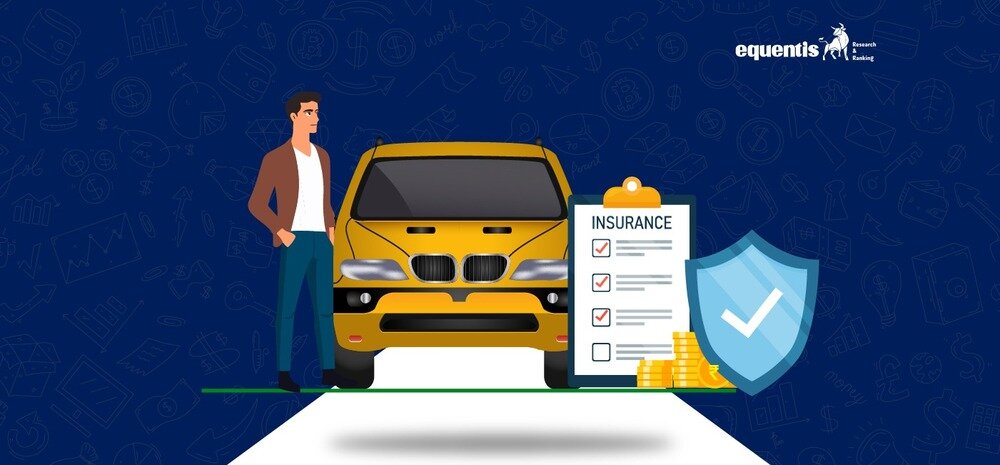Operating a four-wheeler comes with various risks, but having insurance can protect against them. In India, all vehicle owners must have third-party liability insurance. If this insurance doesn’t cover your vehicle, you won’t be allowed to drive it. In the event of an accident, you must promptly file a claim with your insurance provider.
After you file a claim, the insurance company will review the necessary documents. If your claim is valid, they will compensate you for the damages to your car. This article will delve into personal damage insurance and the process for settling claims.
What Does Standalone Own-Damage Car Insurance Cover?
Introduced in September 2019 per the Insurance Regulatory Development Authority of India’s (IRDAI) guidelines, standalone own-damage insurance is a distinct policy that provides financial protection for your vehicle. This coverage includes damages from fire, accidents, theft, or natural disasters. However, it is contingent on having active third-party coverage for your car. Additionally, you can enhance your policy’s coverage by adding riders.
What are the Documents Required?
To file a claim for the damaged cars, several documents are necessary to facilitate the compensation process:
- A copy of your insurance policy
- A copy of the FIR report submitted to the police
- A completed and signed claim form
- A copy of the car’s registration certificate
- A copy of your valid driver’s license
- Details of repair estimates
- For physical injuries, the original medical receipts
- Original receipts for any other related expenses
How Do You Claim Insurance for Car Damage?
Here’s a guide on the procedure for claiming insurance for car damage:
- Contact Your Insurance Provider: Inform your insurance company about the incident and provide details regarding the damage to your car. Being transparent with your insurer facilitates smooth resolution without potential disputes.
- File a Police Report (FIR) if Necessary: If the situation warrants, file a First Information Report (FIR) promptly after reporting the incident to the police.FIRs are typically required for theft, accidents, or fires involving your vehicle, especially if third parties are involved.
- Document the Damage: Capture comprehensive photographic evidence of the accident scene and the damage incurred. Clear, detailed images will aid your insurance provider in accurately assessing the damages and expediting your claim.
- Submit Required Documentation: Gather and provide all necessary paperwork, including your insurance policy copy, FIR, owner’s license, driver’s car registration, and other relevant documents.
- Arrange Repairs: You can take your car to a repair shop or request your insurer to handle the repairs. If your claim is approved, you will receive reimbursement, or your insurer will cover the repairs directly.
- Settlement Process: For cashless settlement, repair costs are transferred to the network garage upon receipt of the surveyor’s report. With reimbursement settlement, claims are settled upon submission of repair receipts, though you will typically be responsible for a deductible.
Remember the deductible, the portion of repair costs you must cover even with insurance assistance.
Tips for Filing a Car Insurance Claim
- Thoroughly inspect your vehicle for damages after an incident, and check for any injuries to yourself or passengers.
- Register your claim within the timeframe specified by your insurance provider, often within 24 hours.
- Note the model, number, and color of all vehicles involved in the accident.
- Collect contact details of any witnesses to help determine fault.
- Assess the damage and promptly contact your insurer.
- Take your vehicle to a network garage for repairs and bill settlement if possible.
To conclude, claiming car insurance for own damage in India involves several steps, from filing a police report to submitting the required documents and inspecting your vehicle. By following these steps carefully, you can ensure a smoother and hassle-free claim process.
FAQs
Is it necessary to file a police report claiming car insurance for own damage in India?
Yes, filing a First Information Report (FIR) at the nearest police station is necessary to process your insurance claim and provide legal validity to it.
What documents are required to claim car insurance for own damage in India?
Documents required include the FIR, insurance policy details, driving license, vehicle registration certificate, and estimate for repair costs.
How long does settling a car insurance claim for own damage in India take?
The time taken to settle a claim varies depending on the insurance company and the complexity of the claim.
How useful was this post?
Click on a star to rate it!
Average rating 5 / 5. Vote count: 2
No votes so far! Be the first to rate this post.
I’m Archana R. Chettiar, an experienced content creator with
an affinity for writing on personal finance and other financial content. I
love to write on equity investing, retirement, managing money, and more.
-
Archana Chettiarhttps://www.equentis.com/blog/author/archana/
-
Archana Chettiarhttps://www.equentis.com/blog/author/archana/
-
Archana Chettiarhttps://www.equentis.com/blog/author/archana/
-
Archana Chettiarhttps://www.equentis.com/blog/author/archana/

